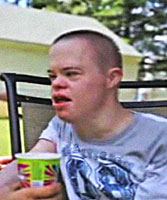About Olmstead
The story of the Olmstead case begins with two women, Lois Curtis and Elaine Wilson, who had mental illness and developmental disabilities, and were voluntarily admitted to the psychiatric unit in the State-run Georgia Regional Hospital. Following the women's medical treatment there, mental health professionals stated that each was ready to move to a community-based program. However, the women remained confined in the institution, each for several years after the initial treatment was concluded. They filed suit under the Americans with Disabilities Act (ADA) for release from the hospital.
The Decision
On June 22, 1999, the United States Supreme Court held in Olmstead v. L.C. that unjustified segregation of persons with disabilities constitutes discrimination in violation of title II of the Americans with Disabilities Act. The Court held that public entities must provide community-based services to persons with disabilities when (1) such services are appropriate; (2) the affected persons do not oppose community-based treatment; and (3) community-based services can be reasonably accommodated, taking into account the resources available to the public entity and the needs of others who are receiving disability services from the entity.
The Supreme Court explained that its holding "reflects two evident judgments." First, "institutional placement of persons who can handle and benefit from community settings perpetuates unwarranted assumptions that persons so isolated are incapable of or unworthy of participating in community life." Second, "confinement in an institution severely diminishes the everyday life activities of individuals, including family relations, social contacts, work options, economic independence, educational advancement, and cultural enrichment."
Faces of Olmstead
The personal stories of a few of the thousands of people whose lives have been improved by the Olmstead decision and the Department’s Olmstead enforcement work.



STEFON
My son’s life is significant; he has affected the lives of many people that he has encountered in the community.”

DOUG
“We have seen many improvements in Doug’s functioning, behavior, and lifestyle since he moved to his group home. The group home not only provides for Doug’s medical needs, but it also allows Doug to thrive and do those things which make him happy.”

MARISA
“I have read the settlement agreement over and over again. In short, it gives people a chance to live independent lives in the community, to thrive in the community, and to give back to the community to whatever degree they can.”


NENA
“Olmstead opened up a world for people like me who were trapped. I’m fifty-one years old and I don’t trap well.”

